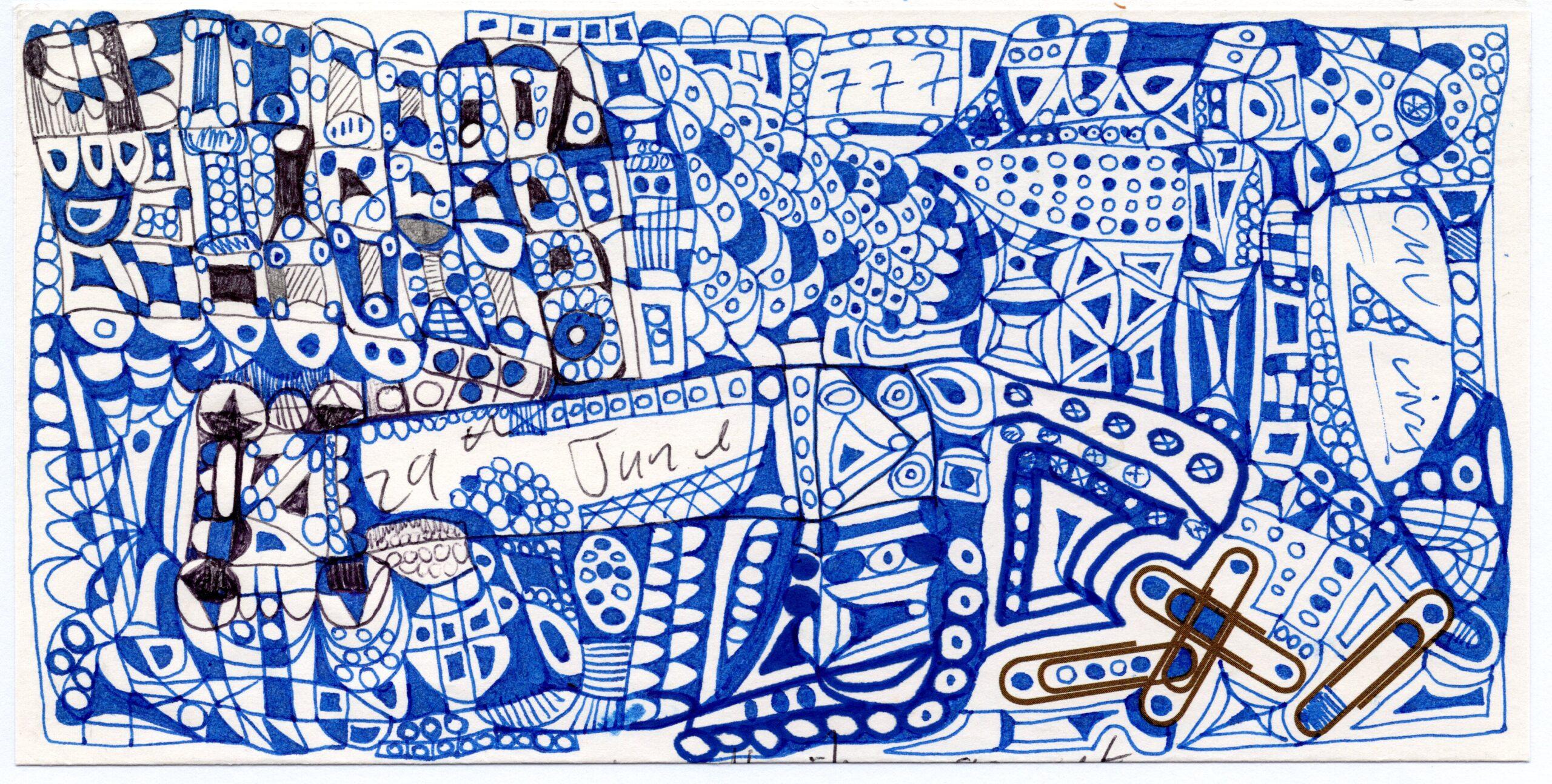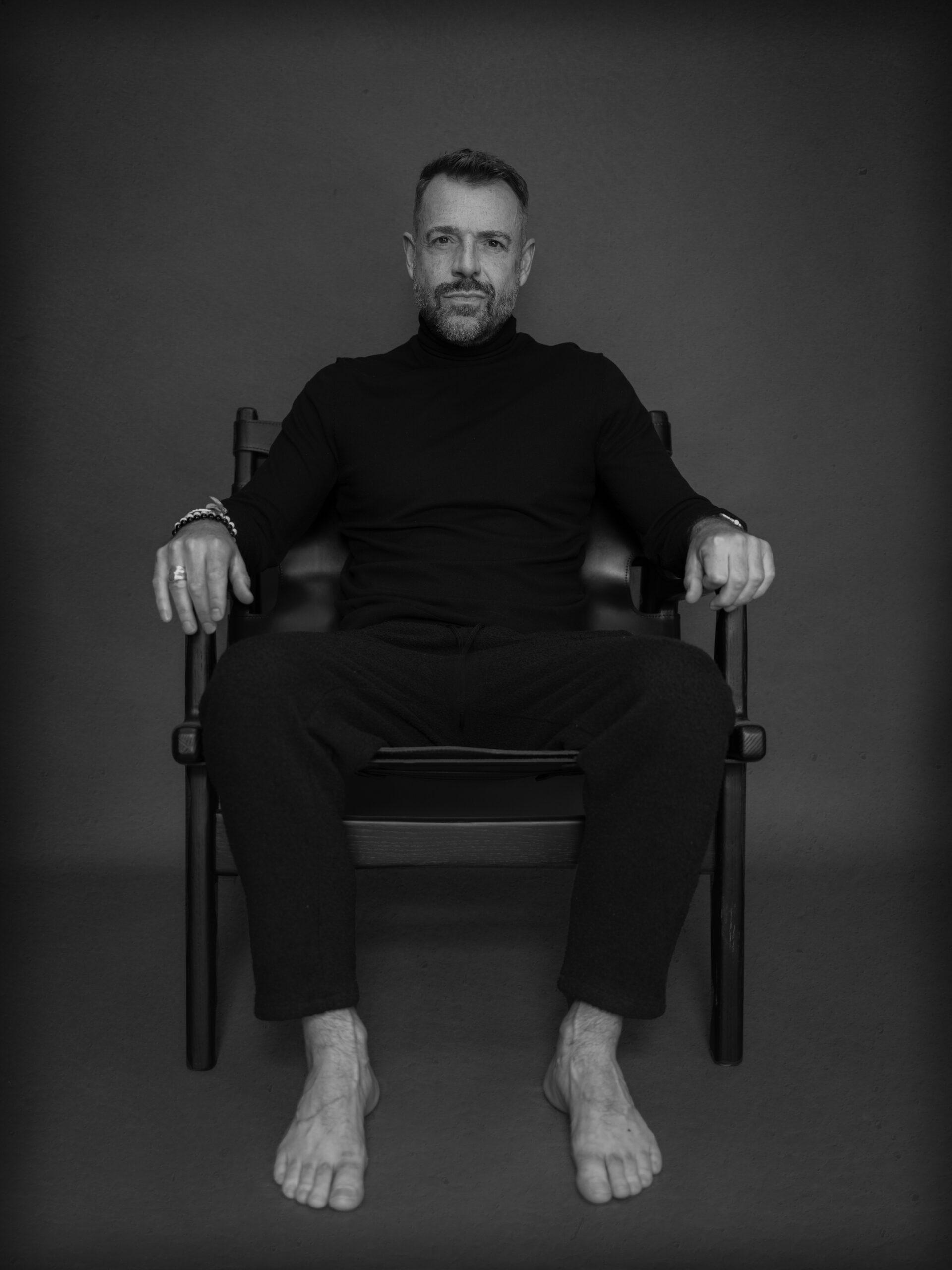Science and art collide at this year’s Royal Academy’s Summer Exhibition
An artwork by Professor Tyson Valentine Sharp from Barts Cancer Institute (BCI) at Queen Mary University of London has been selected for display in Room VIII at the Royal Academy of Art’s prestigious Summer Exhibition.

Tyson V. Sharp is Professor of Cellular and Molecular Biology and Lead for the Centre for Cancer Cell and Molecular Biology at BCI. In his piece, OVERPOPULATION, he explores this year’s theme of Climate through his experience as a cancer researcher and a self-taught abstract artist, focusing on overpopulation and viral infections. OVERPOPULATION will be on display at the Royal Academy from 21 June – 21 August in Room VIII, a room containing prints that have been specially selected by the artist Grayson Perry.
The Summer Exhibition is the world’s largest open-submission contemporary art show which has taken place every year without interruption since 1769. This year the Royal Academy received over 15,000 entries, of which around 1,200 works in a range of media, will go on display. This was the first time Tyson had submitted his work to the Summer Exhibition and both of his submissions made the shortlist, with OVERPOPULATION being selected to exhibit.
For the last 20 years, Tyson has worked on his art alongside his scientific research. Much of his work as an artist is intimately linked to his virus and cancer research, grant applications, and scientific papers he writes. Often, his frustrations at our lack of understanding of cancer biology, human health, and the human condition drives his work.
Engaging with science through art

Tyson hopes that his work will inspire people – from other researchers to members of the public – to engage with science through art. He said:
“I grew up with this perception that science and art aren’t compatible subjects – you can be good at one, but not the other. When I was in school, I couldn’t take art classes, because science and art were scheduled at the same time. So, I had to make a difficult choice.
For me, my art is now so intertwined with my research. I started doodling and then these doodles became more complex as my scientific career took off. It has become part of my scientific process – it allows me to engage with my research on a different, and sometimes deeper level, and often helps me make sense of the chaos and complexity of cancer biology, research, and academic life. My art is a tool in my research, as well as a form of therapy for my wellbeing at work.
I now have hundreds of small doodles/art sketches, which I hope to one day turn into larger pieces, which would be wonderful to share with everyone. I hope that my work encourages others to engage with science through different media, and I hope that it will change perceptions about the value of art within the scientific process, as well as show some of the cancer research we’re doing at Queen Mary.”
Following his success at the Summer Exhibition, Tyson hopes that he can find funding that allows him to continue his artwork and use it as a vehicle to engage people with cancer research and science more generally.
The story behind OVERPOPULATION
When deciding to submit art for this year’s Summer Exhibition, Tyson took a small piece of note paper on his desk on which he had previously jotted down four handwritten words related to his research. Whilst contemplating this year’s theme brief of Climate and the four words he had written, he realised this could be the beginnings of a new art piece.
Firstly, ‘777’ (Boeing 777) represents the jet aircraft industry and the related problems with pollution, fuel use, and the constant demands by the population for more travel and how this is damaging to our climate. Secondly, the two phrases ‘CMV’ (Cytomegalovirus); and ‘virus’ are very pertinent to the pandemic and how overpopulation and travel have been integral components in the COVID-19’s rapid spread around the world. Lastly, ‘29th of June’ was a date that he had written but could not remember the original reason for this. However, realising that the work would be exhibited in June, Tyson thought and hoped this work was destined for the exhibition. With these ideas and thoughts, Tyson set about creating visual representations to restrict and compartmentalise both the population and the virus outbreak with geometric shapes. His need to create order where there is chaos in the context of over population and viral infections, collide in the azure blue and minimal blacks of the work.
More information:
- Find out more about Tyson V. Sharp’s artwork
Website: https://www.tysonvalentinesharp.com/
Instagram: @tysonvalentinesharp - Find out more about Tyson V. Sharp’s cancer research https://www.bartscancer.london/staff/professor-tyson-sharp/
- Tyson's artwork is available to purchase on the Royal Academy of Art website
Category: Engagement, Events, General News

No comments yet